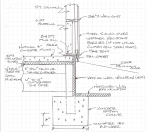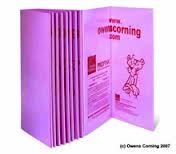Under Slab Insulation XPS or EPS?
Way back (okay, 2021 it just seems like it was long ago), I had extolled virtues of expanded polystyrene (EPS) for barndominium concrete slab insulation boards/
Full article can be read here: https://www.hansenpolebuildings.com/2021/11/barndominium-concrete-slab-insulation-boards/.
 If there is one thing I have learned in my construction industry career, it is insulation manufacturers, suppliers, installers, etc., will seemingly come up with or say anything in order to promote their product over those of others.
If there is one thing I have learned in my construction industry career, it is insulation manufacturers, suppliers, installers, etc., will seemingly come up with or say anything in order to promote their product over those of others.
As an example – consider ridiculous claims made by Reflective Radiant Barrier providers. Martin Holladay of Green Building Advisor ripped them apart here: https://www.hansenpolebuildings.com/2014/04/reflective-insulation-wars/
Or what about those insulated overhead doors? https://www.hansenpolebuildings.com/2020/07/barndominium-high-r-value-overhead-doors-part-i/ and https://www.hansenpolebuildings.com/2020/07/barndominium-high-r-value-overhead-doors-part-ii/.
When I penned my article on EPS for concrete slab insulation, and published it, one of my social media friends had done some of his own research and found this article: https://www.constructionspecifier.com/xps-delivers-high-r-values-in-below-grade-applications/3/.
Now this referenced study by Connor, seemingly refutes data I was able to glean from my previous searches. Connor’s work would lead one to favor XPS over EPS.
Of course EPS Industry Alliance has published their own Technical Bulletin, “Use Fully Aged R-values for Insulation & Building Envelope Design”: https://www.airfoam.com/EPS-vs-XPS-Aged-R-Values.pdf. In this article a claim is made XPS loses R-value as blowing agent retained in cells dissipates over time by as much as 20%, while EPS has a stable R-value, not decreasing with time.
As I was not personally involved in any of these studies, I am unable to draw any personal conclusions or make recommendations past do your own homework, and pick a product you believe will be affordable and do what you need it to do.
 “PolebarnGuru,
“PolebarnGuru,





